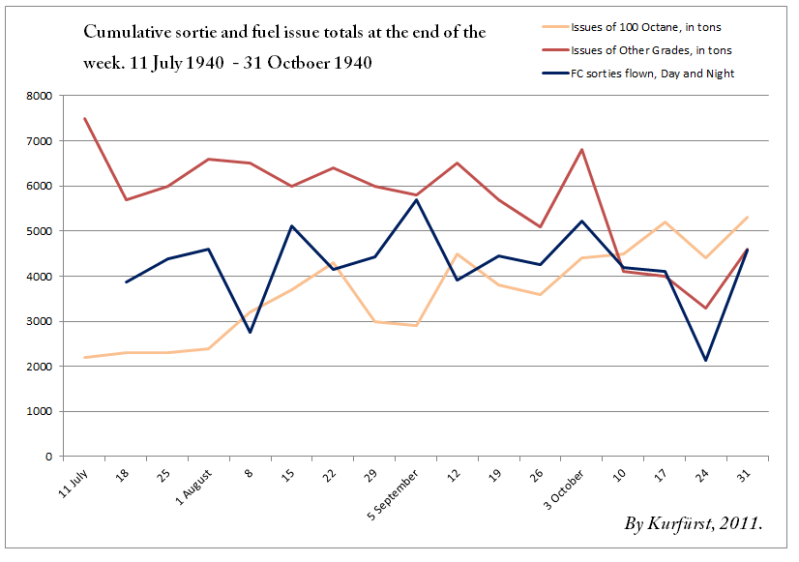
 |
|
#11
|
||||
|
||||
|
Quote:
Quote:
Based on the current evidence (feel free to add new sources showing 100 octane at the said airfield during the Battle and I'll update the list) shows that 100 octane aviation spirit was supplied to 8 out of 19 Sector Airfields 9 out of 32 Fighter Airfields (however 7 of the 32 functioning as satellite airfield for rotation etc., with no Sqn permanently based there). Quote:
As for Bailey's article, it doesn't state anywhere that 100 octane was universal for fighter use; actually, it gives little attention to subject of the extent of use, and instead it concentrates on belittlening the - allegedly widely and wrongly perceived - importance of American 100 octane imports, and the put emphasis of CSP propellerers. On the matter of 100 octane use, it writes: Quote:
Comparison table of FC's sorties vs. the amount of 100 octane and 'other' (ie. 87 octane) aviation fuel issued during the month clearly show that Figther Command was relying on 87 octane for a number of its operational fighter Squadrons.  A few of my own observations: a, It seems clear that 100 octane has begun replacing 87 octane towards the end of September / start of October. Until then, 87 octane is by far the major fuel consumed. b, This corresponds with what the Lord Beaverbook memo noted about re-starting the conversion c, Its also very appearant that issues have a bit of 'delay' built into them. Obviously supply's nature is that they re-supply after the fuel at the airfields has been used and there's reported need for new issues. This takes time. d, 100 octane issue curves are clearly responding to FC sorties number increase/decrease. Though that's not news, FC used that fuel. But it should be kept in mind that number of Blenheim Sqns also used and were issued 100 octane fuel, and a Blenheim sortie would consume 4-6 times the fuel a fighter sortie would. e, On the other hand, 87 octane issues ALSO clearly reacts to FC sorties number increase/decrease. It shouldn't, if all frontline Sqns would be using only 100 octane. f, Obviously the 87 octane curve reaction is less pronounced, as fa, A good percentage of FC used 100 octane, so they don't their needs 'do not exists' from the 87 octane issues POV fb, A large number of other aircraft also uses 87 octane, and many of them - bombers, patrol craft etc. - consume much more fuel than small fighters. In my opinion, the most conclusive evidence that even towards the end of October a number of fighter squadrons were flying on 87 octane is evident by the sudden and perfectly parallel rise of both 87 octane issues and FC sorties curves at the time. Tendencies to have British aircraft using only the best possible configurations are nothing more than the naked truth of gamers wanting more advantage to their aircraft, regardless of historical accuracy.
__________________
Il-2Bugtracker: Feature #200: Missing 100 octane subtypes of Bf 109E and Bf 110C http://www.il2bugtracker.com/issues/200 Il-2Bugtracker: Bug #415: Spitfire Mk I, Ia, and Mk II: Stability and Control http://www.il2bugtracker.com/issues/415 Kurfürst - Your resource site on Bf 109 performance! http://kurfurst.org 
|
| Thread Tools | |
| Display Modes | |
|
|